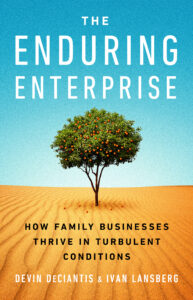A Fork in the Road: Individual vs Collective Philanthropy Across Generations
How are some families able to work together successfully in their joint family philanthropy over generations, while most family foundations don’t make it past the second generation?
To help understand the answer to this question, we partnered with the National Center for Family Philanthropy to conduct research on the evolution of twenty multi-generational, multi-vehicle family philanthropy systems. We found that families’ abilities to work together effectively in their philanthropy is dependent not only on the way they design their collective family foundation, but also in how they structure the philanthropic activities outside of it. The most successful families utilized a range of philanthropic vehicles, strategies, and practices to meet both individual and collective aspirations of their expanding family.
|
Families have many goals for their family philanthropy: to meaningfully contribute to positive social change, foster a spirit of generosity in family members, serve as “glue” that strengthens family connections, create a family legacy of impact. For many families, a family foundation—a collective entity that provides a unifying family philanthropy experience—is core to the achievement of these goals. Yet as families become more complex over time, so too does their philanthropy: more people, more philanthropic interests, more vehicles to address those interests. The family foundation becomes one part of a complex family philanthropy enterprise.
This structural and strategic evolution is mirrored by a more fundamental evolution in mindset. The most successful families in our research—those who were most energized and engaged by the quality of their philanthropy, who felt closer to their family due to their participation—had shifted from a sense of ownership to stewardship of the family’s philanthropic capital. As they got further from wealth creation, they no longer saw the family foundation as “their money,” with participation an entitlement or obligation, but rather a public trust in which participation is a privilege and responsibility. These families developed a collaborative model of family philanthropy, grounded in a shared vision and jointly-defined giving priorities which were distinct from individual members’ philanthropic agendas. Conversely, the families that maintained a more individualistic model were grappling with how to scale the model to their expanding family, where members felt entitled to a “share” of the family philanthropic capital.










